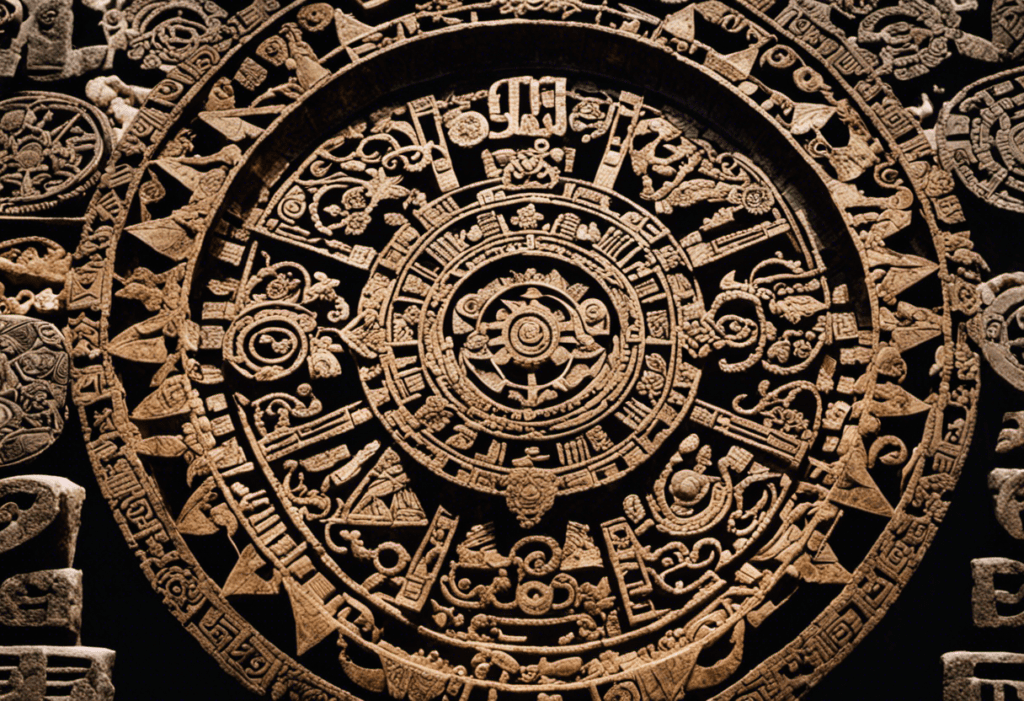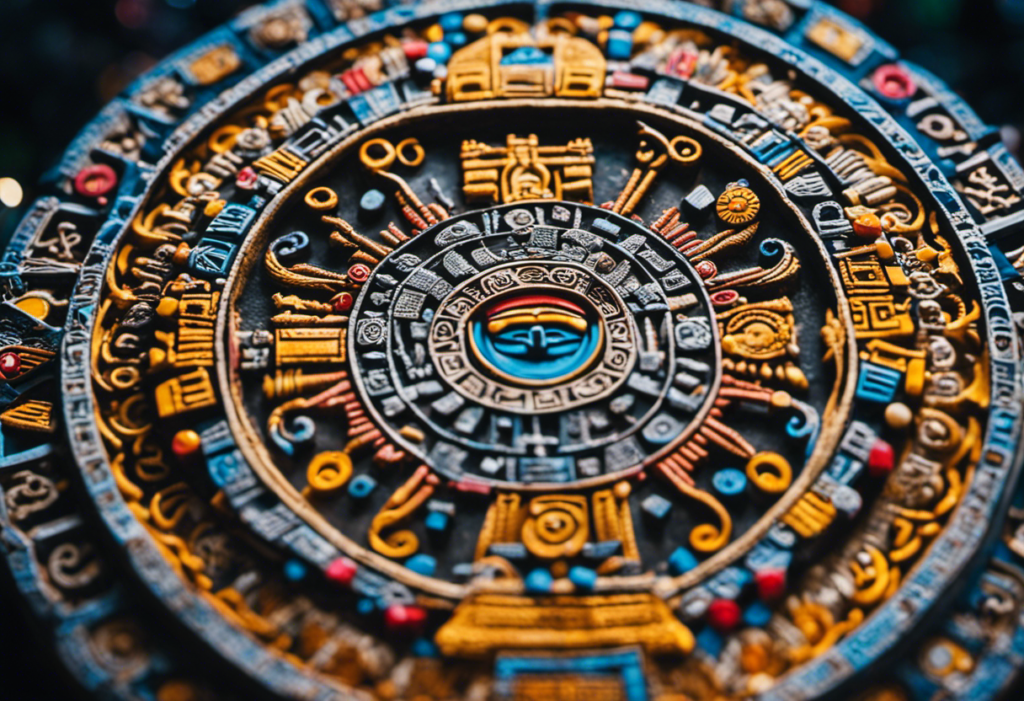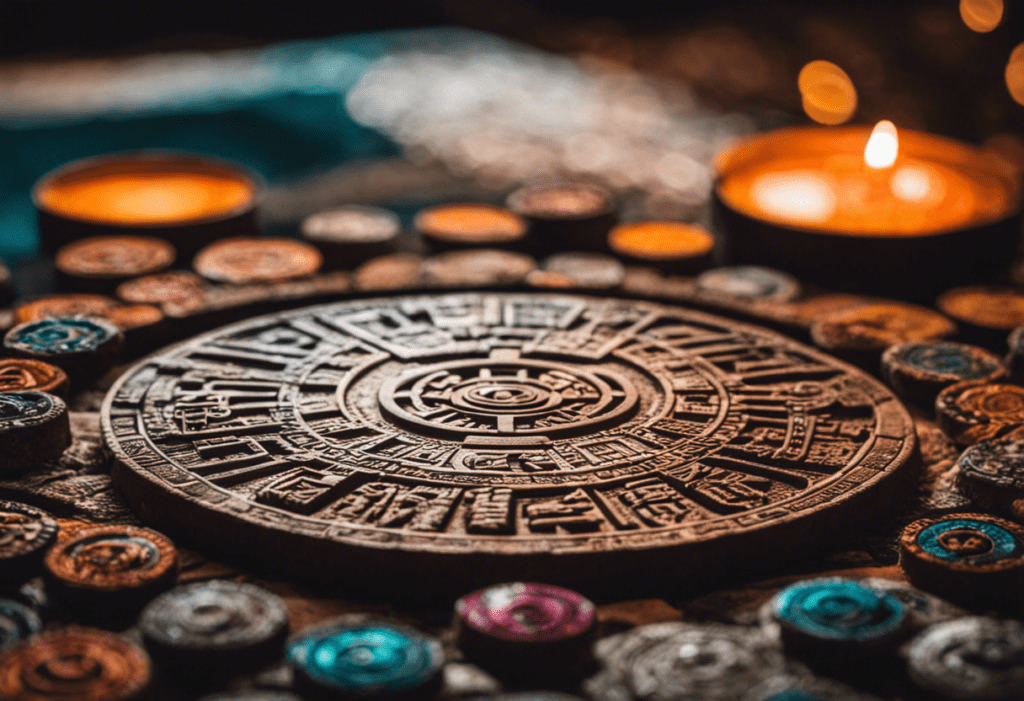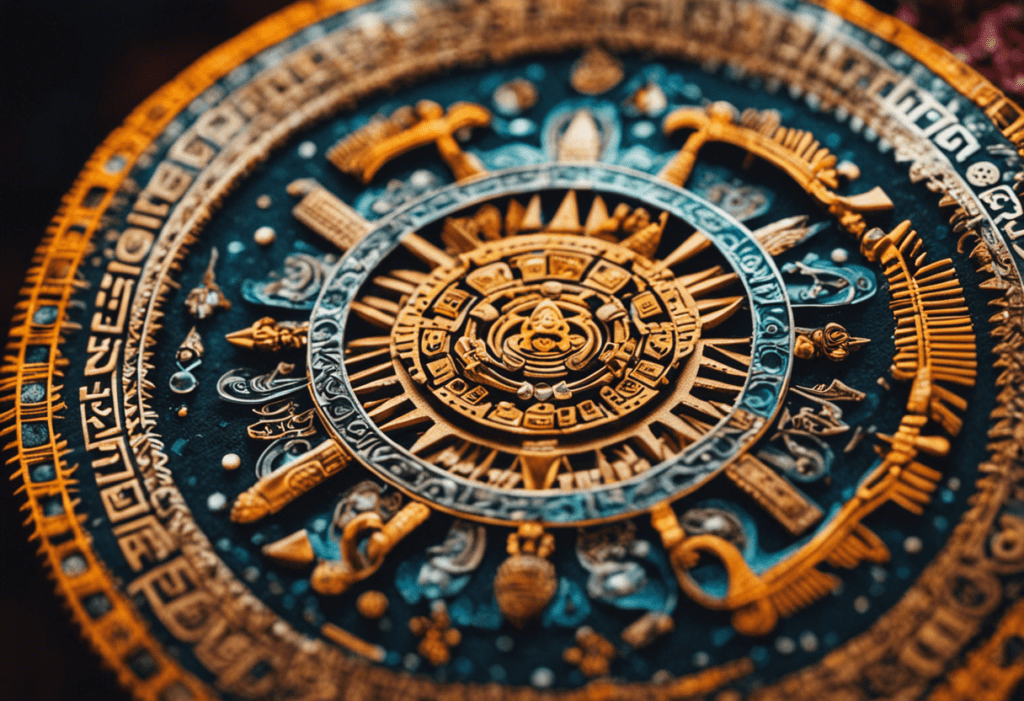The Aztec civilization, renowned for its rich cultural heritage, possessed a unique and intricate system of time measurement known as the Aztec Calendar.
Central to this calendar were the Day Signs, symbols that represented specific days and held deep spiritual significance.
In this article, we delve into a comprehensive exploration of the Day Signs, unravelling their origins, symbolism, and role in Aztec daily life.
By decoding these enigmatic symbols, we hope to shed light on their profound influence on Aztec rituals and ceremonies.
Key Takeaways
- The Aztec Calendar, known as the tonalpohualli, consisted of 20 day signs with their own meanings and associations.
- Day signs represented natural elements and held cultural and religious significance, guiding daily life and influencing individual characteristics and fate.
- Day signs played a crucial role in religious rituals and ceremonies, representing different deities and determining auspicious times for events.
- Understanding the day signs provides insights into Aztec beliefs, practices, and society, revealing the interconnectedness of the natural and spiritual world.
The Origin and Creation of the Aztec Calendar Day Signs
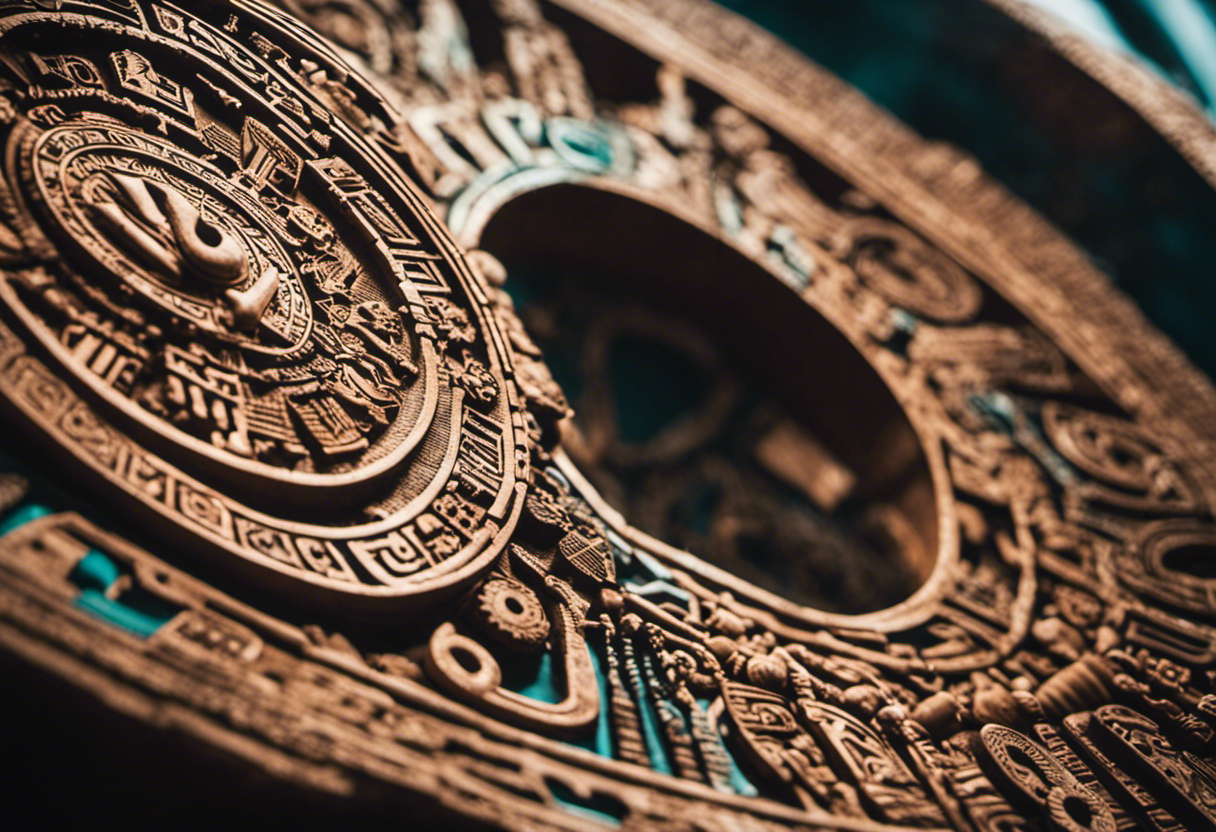

The origin and creation of the Aztec Calendar Day Signs were deeply rooted in the religious and cultural beliefs of the ancient Aztec civilization. This intricate calendar system, known as the tonalpohualli, played a crucial role in the daily lives of the Aztecs, serving as a guide for various religious ceremonies, agricultural activities, and personal affairs.
The evolution of the Aztec calendar can be traced back to earlier Mesoamerican civilizations, such as the Olmecs and the Mayans. However, the Aztecs added their own unique elements and symbolism to the calendar, reflecting their distinct cultural identity. The calendar consisted of 20 day signs, each with its own distinct meaning and association. These day signs represented different natural elements, such as animals, plants, and celestial bodies, and held significant cultural and religious significance.
The cultural significance of the Aztec calendar day signs cannot be overstated. They were not only used for practical purposes such as tracking time and organizing activities, but also played a crucial role in religious rituals and ceremonies. The Aztecs believed that the day sign under which a person was born influenced their character traits and destiny. Therefore, the day signs held immense importance in determining social hierarchies and personal identities within the Aztec society.
Understanding the Symbolism Behind Each Aztec Calendar Day Sign
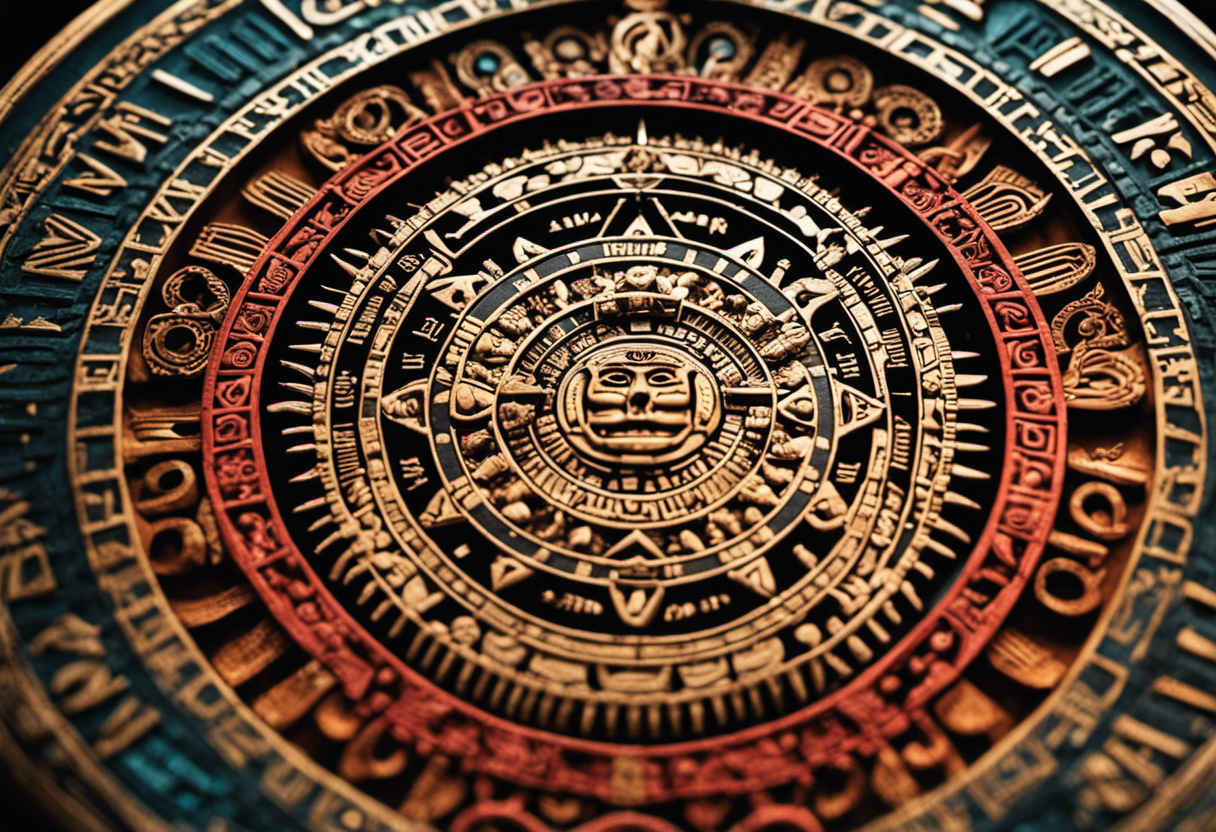

Each Aztec calendar day sign is imbued with rich symbolism that reflects the spiritual and natural world of the ancient Aztec civilization. These symbols were carefully chosen to convey deeper meanings and provide guidance to the people.
To understand the symbolism behind each day sign, it is important to consult an interpretation guide that outlines the significance of each symbol.
The interpretation guide helps to decipher the hidden messages within the day signs, allowing individuals to gain a deeper understanding of themselves and their place in the world. Here are some key points to consider when exploring the symbolism in day signs:
- Animal Representations: Many day signs are associated with specific animals, such as the jaguar or the eagle. These animals hold cultural and spiritual significance, representing qualities such as strength, wisdom, and bravery.
- Natural Elements: The Aztecs revered the forces of nature, and many day signs are linked to natural elements like fire, water, or wind. These elements symbolize different aspects of life, such as transformation, purification, and balance.
- Cosmic Connections: The day signs also hold connections to celestial bodies and astronomical events. They represent the interplay between the earthly realm and the cosmic forces, highlighting the interconnectedness of all things.
The Role of the Aztec Calendar Day Signs in Daily Life
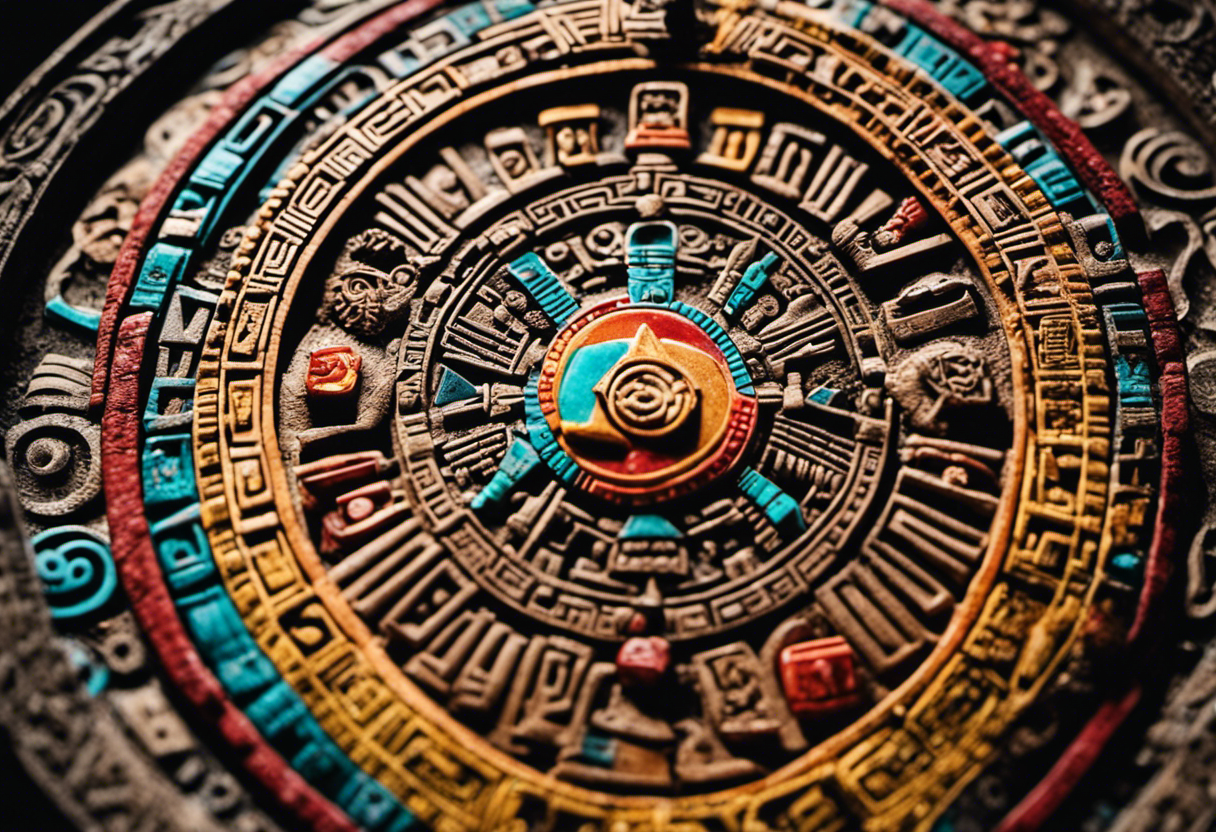

Regularly consulted and intricately woven into the fabric of Aztec daily life, the Aztec calendar day signs played a vital role in guiding individuals and communities. The day signs, known as tonalpohualli in the Nahuatl language, were believed to have a direct influence on the characteristics and fate of individuals born on specific days. These signs were used to determine the most auspicious times for important events such as births, marriages, and agricultural activities.
In Aztec culture, the day signs were not only used for personal guidance but also for communal rituals and practices. Each day sign was associated with specific deities and had its own unique symbolism. For example, the sign Jaguar represented power and strength, while the sign Rabbit was associated with fertility and abundance. These associations were incorporated into daily rituals and practices, such as offerings and prayers, to seek the favor and protection of the corresponding deities.
Furthermore, the day signs were also crucial in determining the roles and responsibilities of individuals within the community. The Aztecs believed that each person had a specific destiny based on their day sign. This influenced their choice of occupation and their contributions to the community. For instance, individuals born under the sign Wind were believed to possess excellent communication skills and were often chosen as messengers or scribes.
Exploring the Spiritual and Mythological Significance of the Day Signs
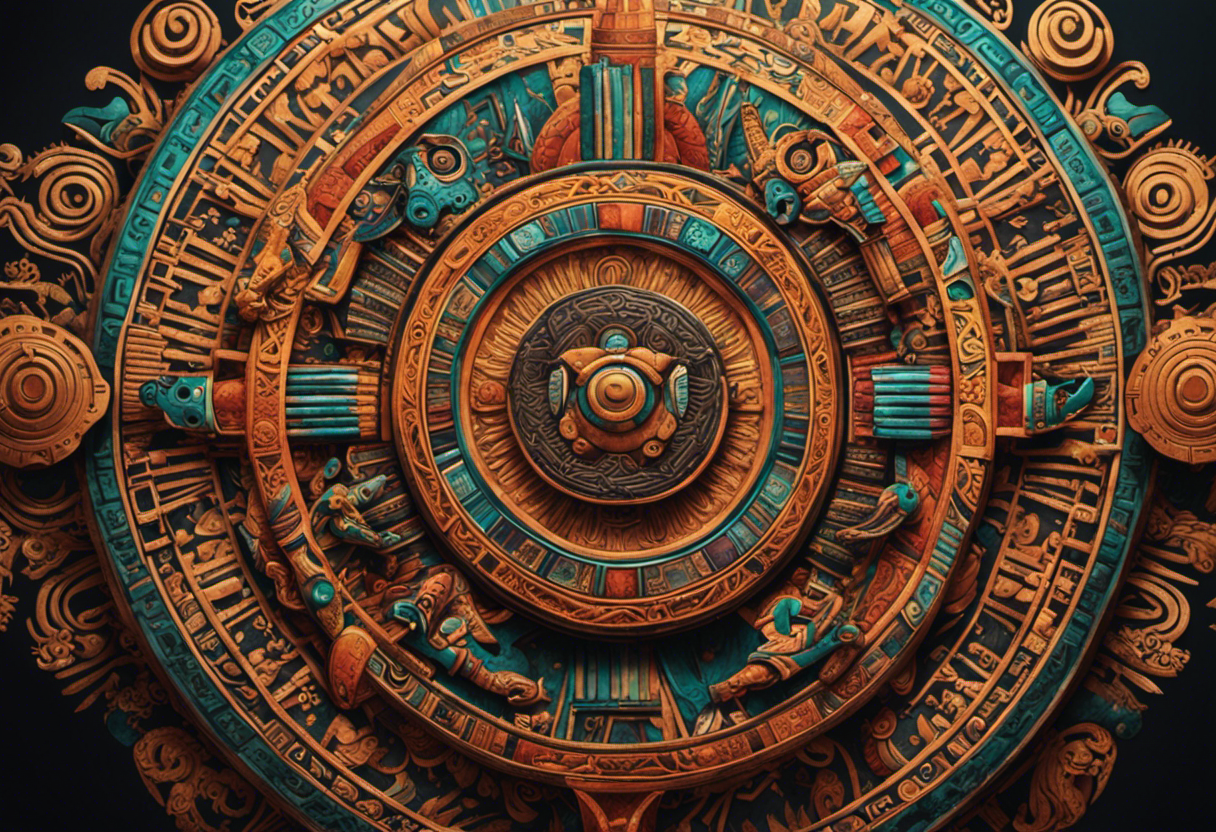

Throughout Aztec mythology and spirituality, the day signs of the Aztec calendar held a profound and revered significance. These day signs were not just used for practical purposes like tracking time, but they were deeply intertwined with the spiritual and mythological beliefs of the Aztec people.
Exploring the spirituality and mythological symbolism associated with these day signs provides a deeper understanding of the Aztec worldview and their connection to the divine.
- The day signs were believed to represent different deities and cosmic forces, each with their own unique qualities and powers. This allowed individuals to align themselves with specific energies and seek guidance or protection.
- The day signs also played a crucial role in religious rituals and ceremonies. They were used to determine auspicious dates for important events, such as the initiation of warriors or the consecration of temples. The belief was that by aligning these events with the appropriate day sign, the desired outcome would be more likely to occur.
- Furthermore, the day signs were believed to have a direct influence on an individual’s character and destiny. It was believed that the day sign under which a person was born would shape their personality traits and determine their life path.
The Aztec Calendar Day Signs and Their Connection to Nature
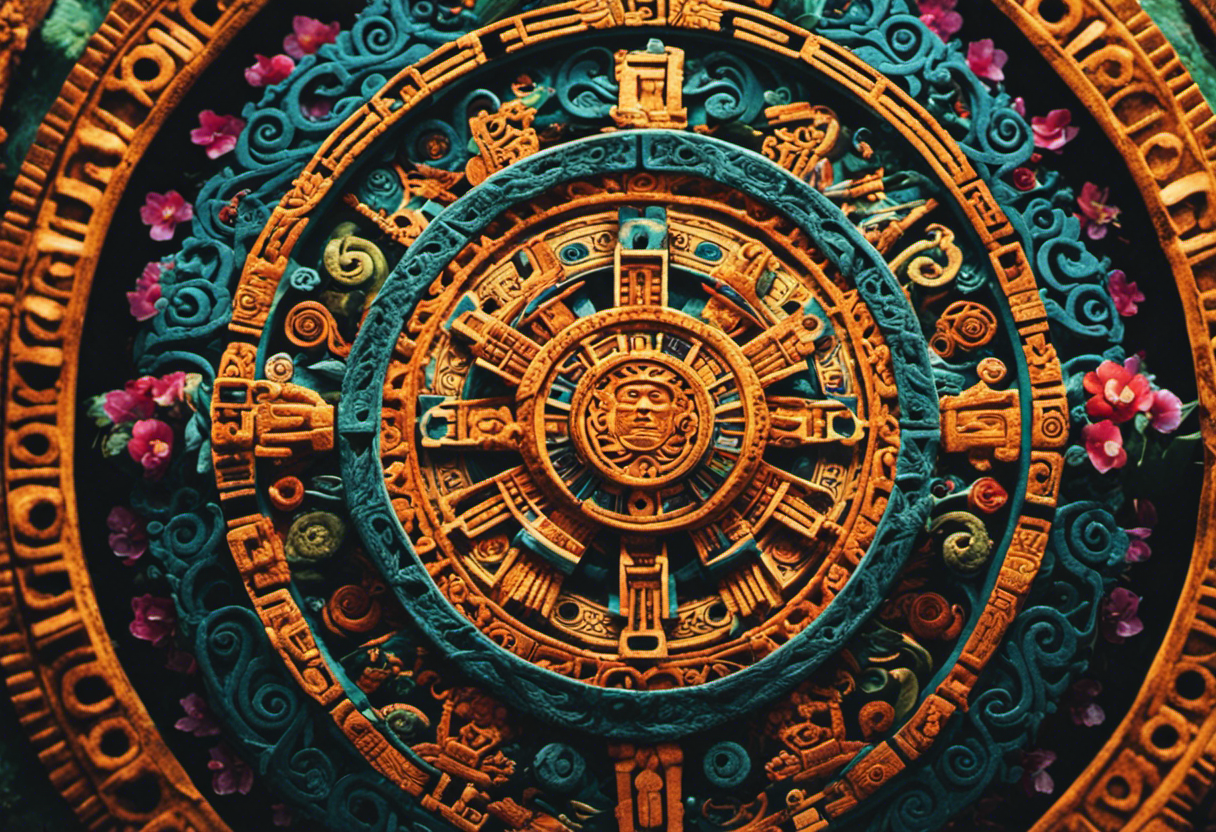

The Aztec calendar day signs hold deep symbolism and are intricately connected to the natural world. Each day sign represents a different natural element, such as animals, plants, or celestial bodies, which were seen as powerful and influential forces in Aztec culture.
These day signs played a significant role in daily life, shaping everything from agricultural practices to religious ceremonies, and offering a way for the Aztecs to understand and navigate their relationship with the natural world.
Symbolism in Day Signs
The symbolism embedded in the day signs of the Aztec calendar reveals a profound connection between the indigenous culture and the natural world. These symbols were not merely representations of the days; they held deep cultural significance and were a way for the Aztecs to understand the world around them.
The day sign of ‘Ocelotl’ symbolized strength and agility, embodying the characteristics of the jaguar, a powerful and revered creature in Aztec mythology.
‘Calli’, the day sign representing the house, symbolized stability and shelter, reflecting the importance of family and community in Aztec society.
The day sign ‘Atl’ represented water, symbolizing life and purification, as water was considered a sacred element in Aztec rituals.
Natural Elements Represented
Frequently overlooked in discussions of the Aztec calendar, the day signs serve as powerful symbols that embody the natural elements and their profound connection to the indigenous culture.
Each of the 20 day signs, also known as ‘Nahui Ollin’ or ‘Four Movement,’ represents a unique combination of natural elements, such as animals, plants, or celestial bodies. These symbolic representations hold great cultural significance for the Aztecs, reflecting their deep understanding and reverence for the natural world.
For example, ‘Cipactli,’ the crocodile, represents the element of water and symbolizes creation and fertility. ‘Ehecatl,’ the wind, signifies the element of air and represents change and transformation. ‘Quiahuitl,’ the rain, embodies the element of water and symbolizes growth and abundance. Each day sign holds its own meaning and is believed to influence the characteristics and destiny of individuals born under it.
The day signs’ connection to nature showcases the Aztecs’ belief in the interdependence between humans and the natural world. By incorporating these elements into their calendar, the Aztecs demonstrated their deep respect and harmonious relationship with nature.
Influences on Daily Life
The day signs of the Aztec calendar, along with their profound connection to nature, played a significant role in shaping the daily lives of the indigenous people. These signs influenced not only their traditions but also had an impact on the social hierarchy of the Aztec society.
The day signs guided the Aztecs in their daily activities, such as farming, hunting, and gathering. They believed that each day sign had specific qualities that affected the outcome of their endeavors, leading to the development of rituals and ceremonies associated with each sign.
The day signs also influenced the social structure of the Aztec society. Certain signs were considered more auspicious and powerful, and individuals born under these signs were believed to possess higher status and greater potential for leadership.
The day signs were closely tied to the Aztec pantheon, with each sign associated with a specific deity. This connection between the signs and the gods further reinforced the influence of the day signs on Aztec daily life and religious practices.
The influence of the day signs on traditions and their impact on the social hierarchy demonstrate the deep significance of the Aztec calendar in the lives of the indigenous people.
The Influence of the Day Signs on Aztec Rituals and Ceremonies
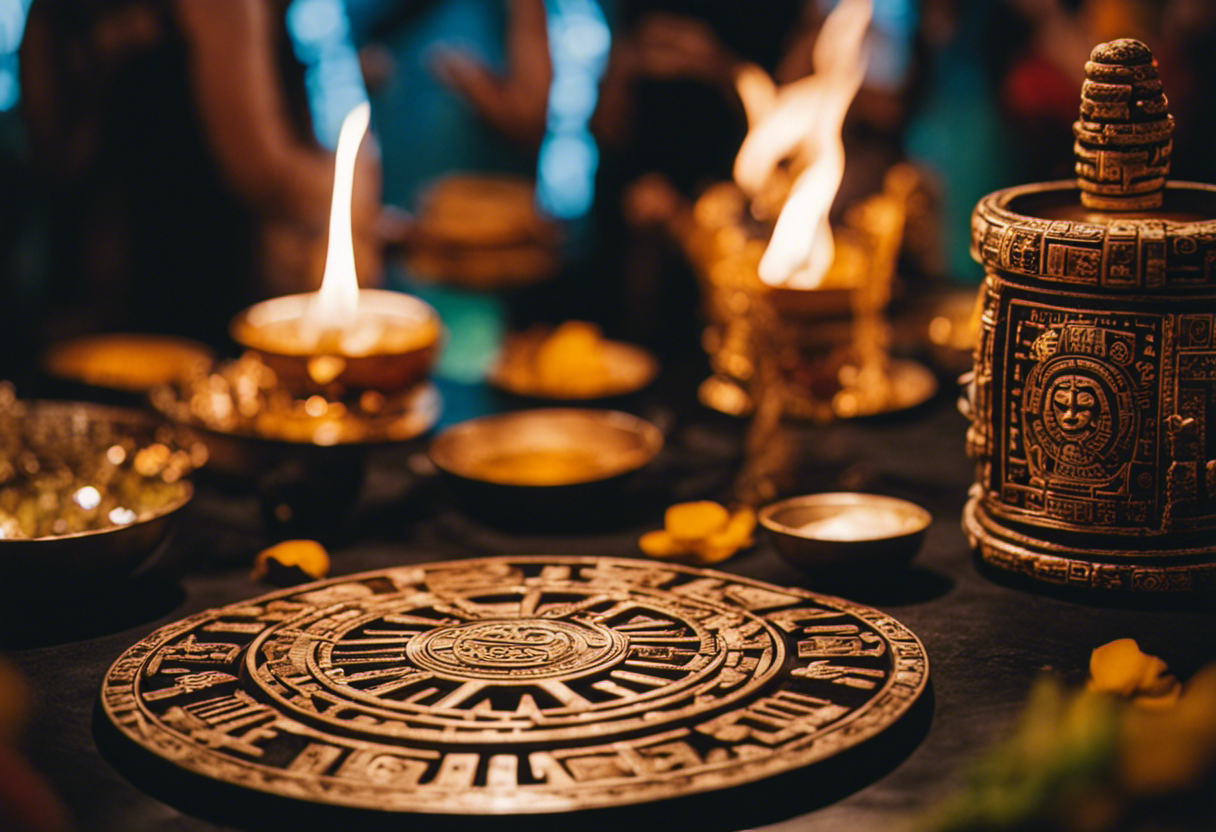

The day signs of the Aztec calendar held significant ritual and ceremonial importance in Aztec society. These signs were believed to have a direct connection to the deities and natural forces, and as such, they played a central role in Aztec rituals.
From birth ceremonies to agricultural rituals, the day signs guided the actions and offerings made by the Aztec people. They served as a means to communicate with the spiritual realm and ensure the favor of the gods.
Ritual Significance of Signs
An understanding of the ritual significance of the day signs is crucial in comprehending the profound influence they exerted on Aztec rituals and ceremonies. The day signs played a central role in shaping the Aztec’s ritual practices, reflecting their cultural significance and beliefs.
The day signs served as a guide for determining auspicious days for important ceremonies and events, such as marriages, births, and agricultural activities.
Each day sign was associated with specific deities and cosmic forces, allowing the Aztecs to establish a connection between the earthly realm and the divine.
The day signs also influenced the choice of offerings and rituals performed during ceremonies, ensuring the alignment of human actions with the cosmic order.
Day Signs in Ceremonies
Through their intricate knowledge of the day signs and their cosmic significance, the Aztecs skillfully incorporated these celestial symbols into their ceremonies, ensuring a profound connection between the earthly realm and the divine. The day signs played a crucial role in Aztec astrology and divination practices, guiding the priests and shamans in their ritualistic endeavors.
The Aztecs believed that each day sign held unique attributes and energies that influenced various aspects of life, including health, agriculture, and warfare. During ceremonies, the day signs were invoked to seek guidance, protection, and blessings from the gods. For example, the day sign of Ocelotl (Jaguar) represented strength and courage, and it was frequently invoked during military ceremonies. Similarly, the day sign of Xochitl (Flower) symbolized beauty and fertility, making it central to agricultural rituals.
The day signs in astrology and divination formed an integral part of Aztec ceremonies, allowing the priests and shamans to establish a harmonious connection between the human and divine realms.
Aztec Calendar Rituals
Aztec Calendar Rituals were deeply rooted in the belief that the day signs held immense power and influence over the success and outcomes of their ceremonies and rituals. The significance of day signs in these rituals can be seen in the following ways:
- Alignment with the gods: Each day sign represented a specific deity or natural element, and by incorporating these signs into their rituals, the Aztecs believed they were aligning themselves with the divine forces.
- Predicting auspicious moments: The day signs were used as a tool to determine favorable times for performing certain rituals. The Aztecs believed that by conducting ceremonies during the appropriate day sign, they could enhance the effectiveness and potency of their rituals.
- Seeking divine guidance: The day signs were also consulted to seek divine guidance and ensure the success of important events such as coronations, births, and marriages. The Aztecs believed that by performing rituals on the corresponding day sign, they could receive blessings and protection from the gods.
Decoding the Aztec Calendar Day Signs: A Guide to Interpretation
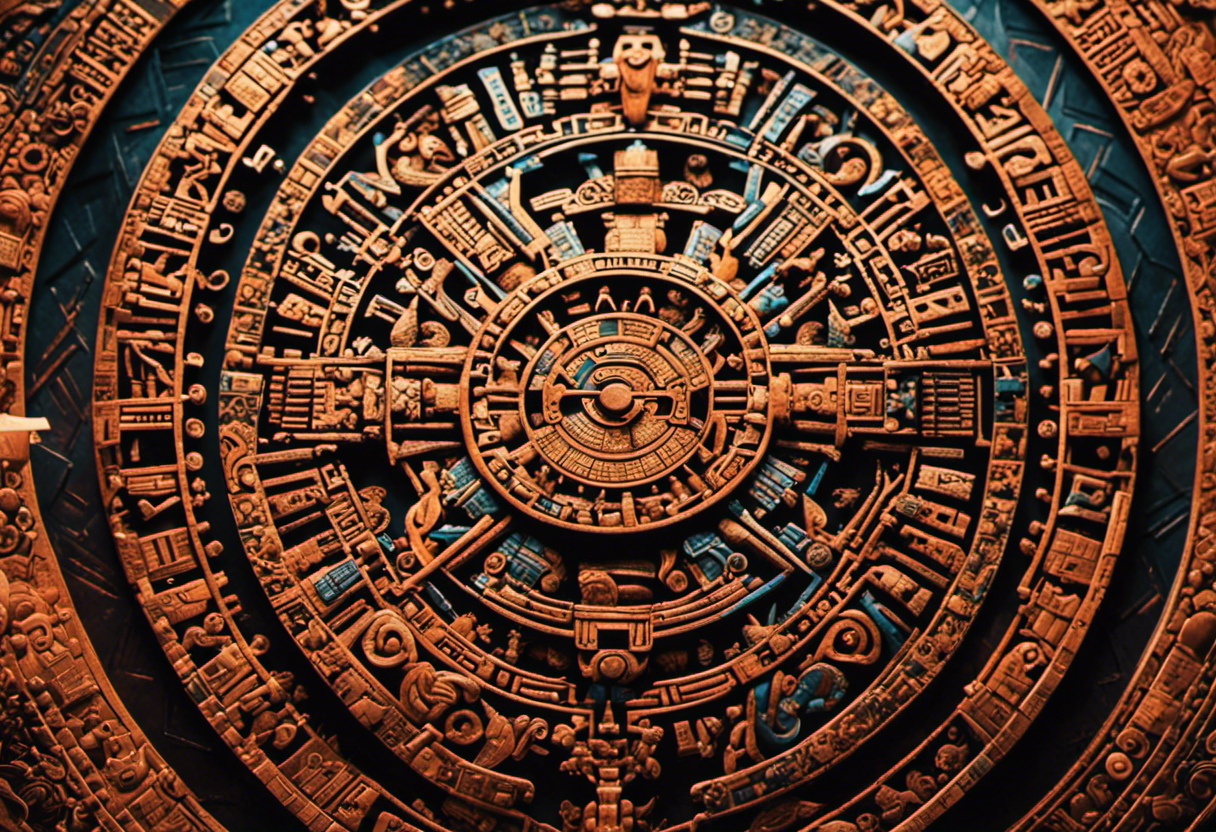

In order to gain a deeper understanding of the Aztec Calendar Day Signs, it is essential to explore various methods for decoding and interpreting their significance. The symbols used in the Aztec Calendar, known as the day signs, were rich in meaning and held great importance in Aztec culture. Interpreting these symbols requires a careful examination of their historical context and the cultural beliefs of the Aztecs.
One method for decoding the day signs is to analyze their visual representation. Each day sign is depicted as a unique symbol with its own distinct characteristics. By studying the shapes, lines, and patterns within these symbols, scholars can uncover hidden meanings and connections. For example, the day sign Ocelotl, which represents the jaguar, features sharp teeth and claws, symbolizing strength and power.
Another approach to interpretation is to consider the historical context in which the day signs were used. The Aztecs believed that each day sign held specific qualities and influences, affecting various aspects of life such as agriculture, warfare, and human behavior. By examining historical records and accounts, researchers can gain insights into how the Aztecs understood and applied the day signs in their daily lives.
Conclusion
In conclusion, the Aztec calendar day signs hold immense significance in the daily lives, rituals, and spiritual beliefs of the Aztec civilization. Each day sign represents a unique symbol and holds a connection to nature and the celestial world.
Decoding the day signs requires an understanding of their mythological and spiritual contexts. The Aztec calendar day signs continue to fascinate and intrigue researchers, offering valuable insights into the rich cultural heritage of the Aztec people.

